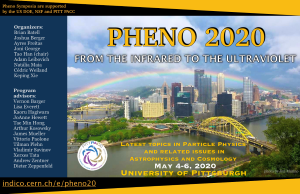Speaker
Description
I will review the results of our direct numerical simulations of magnetohydrodynamic turbulence in the early universe: I will discuss the stochastic background of gravitational waves and relic magnetic fields produced from the early-universe turbulence. These simulations do not make the simplifying assumptions of earlier analytic calculations. If the turbulence is assumed to have an energy-carrying scale that is about a hundredth of the Hubble scale at the time of generation, as expected in a first-order phase transition, the peak of gravitational wave power will be in the mHz frequency range for a signal produced at the electroweak scale. The efficiency of gravitational waves production varies significantly with how the turbulence is driven. Detectability of turbulence at the electroweak scale by the planned Laser Interferometer Space Antenna (LISA) requires anywhere from 0.1 to 10 percent of the thermal plasma energy density to be in plasma motions or magnetic fields, depending on the model of the driving process. At frequencies below the peak value, our results predict a new universal form of the spectrum with more power than previously thought. The enhanced low-frequency tail makes turbulence at significantly higher energy scales detectable.
Summary
Tracks: Cosmology & Gravitational Waves
